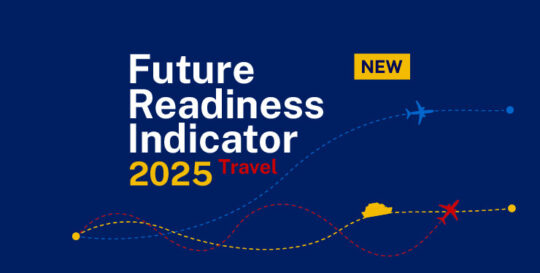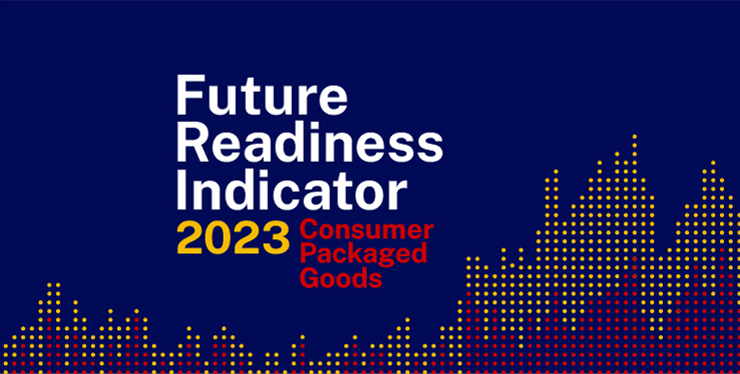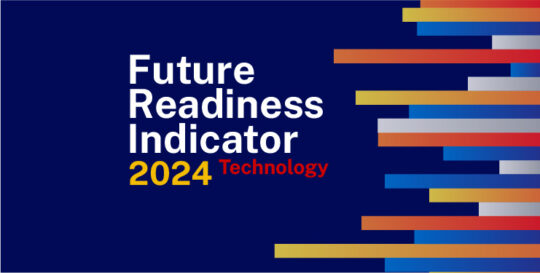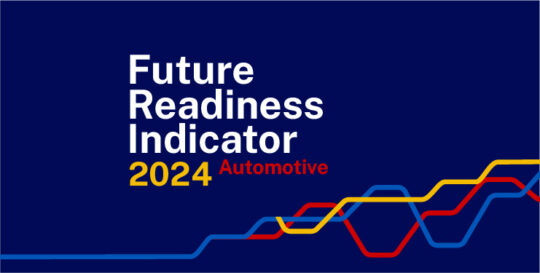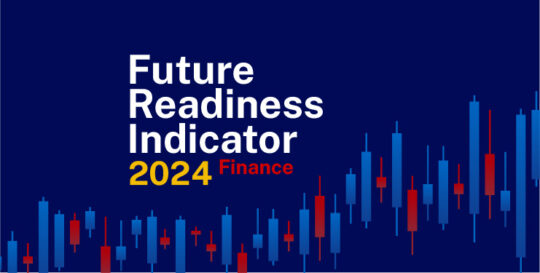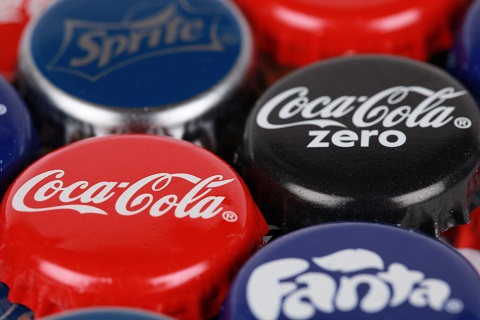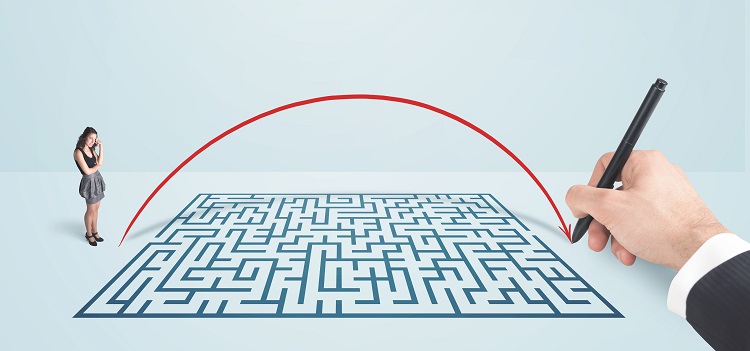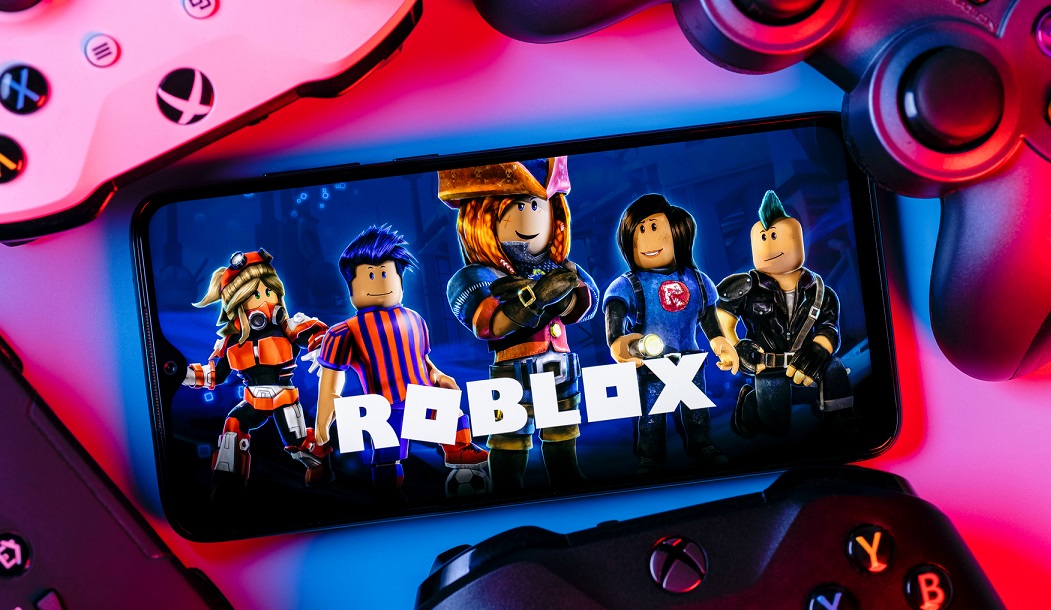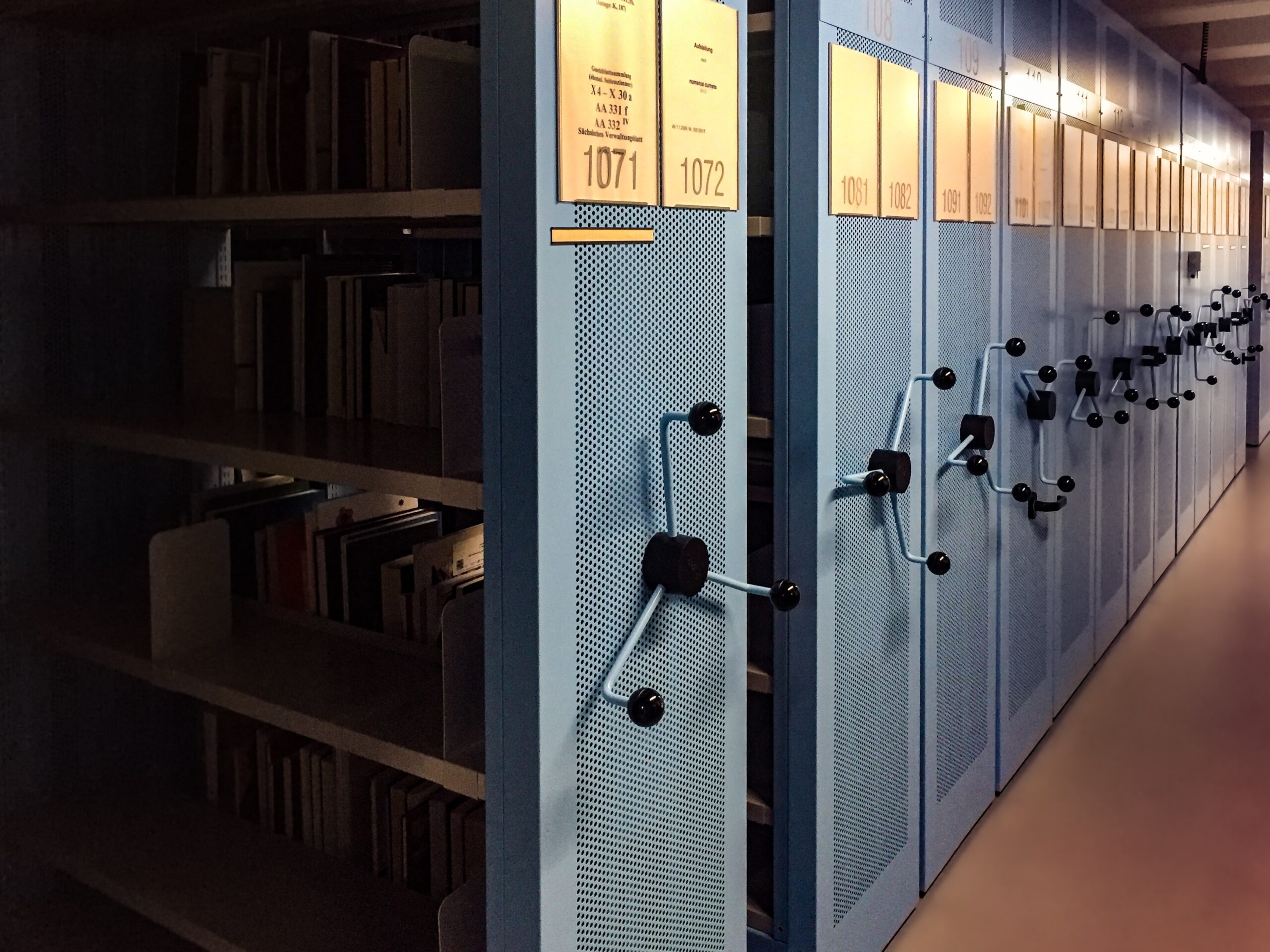IMD business school for management and leadership courses
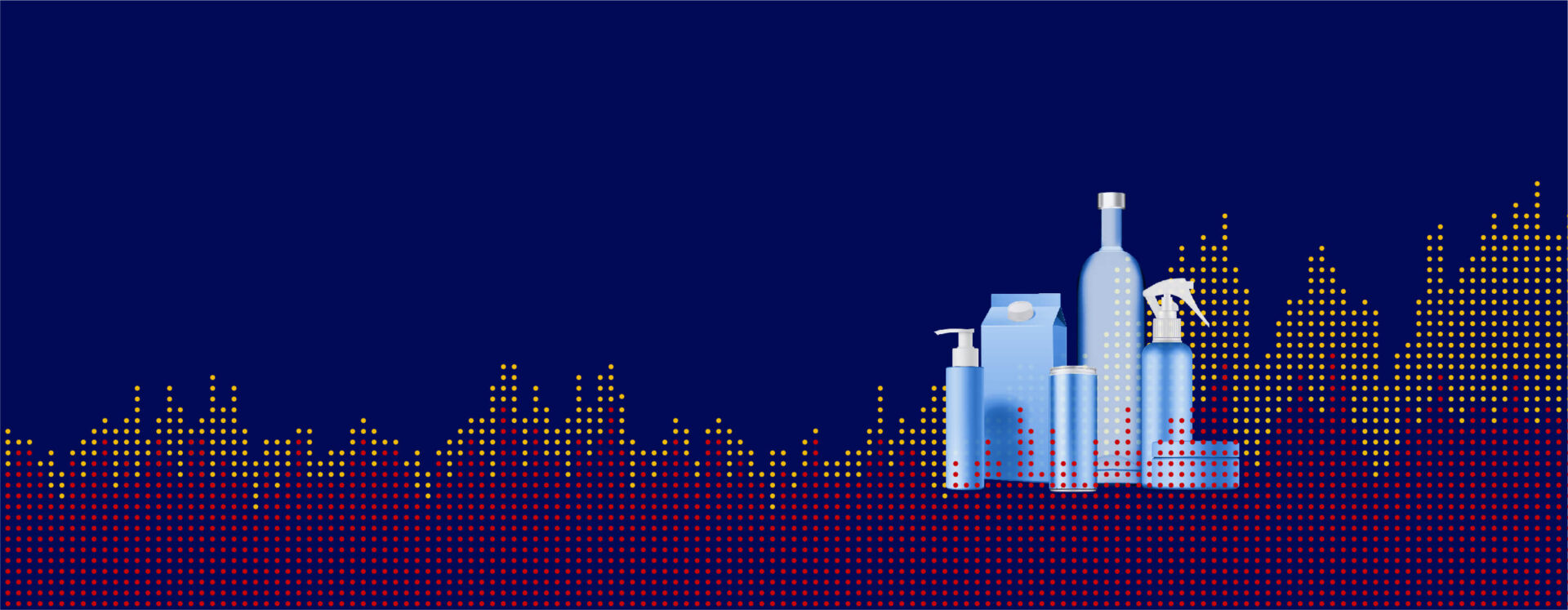

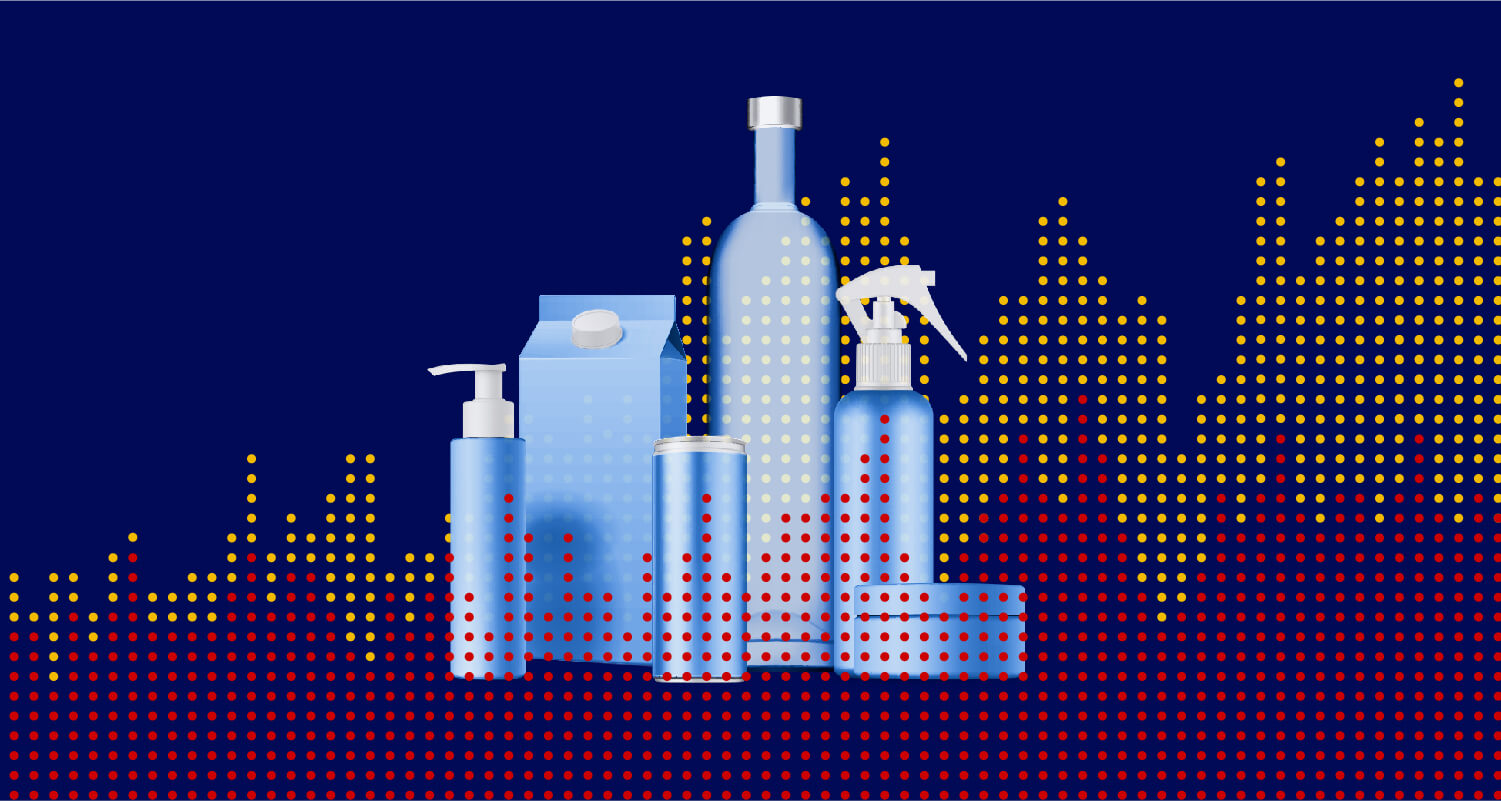
Future Readiness Indicator
The tech-savvy consumer packaged goods revolution: How L’Oréal took the lead
Industry titans like Procter & Gamble (P&G), Coca-Cola, and Nestlé have long dominated the consumer packaged goods (CPG) industry. But this year, amidst a backdrop of dramatic transformation in the sector, L’Oréal took the top spot. How did L’Oréal arrive at a perfect score?
- Unprecedented technological innovation: L’Oréal’s massive investment in AI, omnichannel, partnership, and social listening sees it rise to the top of the Future Readiness Indicator 2024
- Industry titans still hold sway: Procter & Gamble (P&G), Coca-Cola, and Nestlé still hold top spots, but their relative scores fell while L’Oréal’s rose to a perfect 100.00 in 2024
- A powerful trend: There is a direct correlation between a company’s innovation focus and its success – companies that prioritize tech outperform those lagging in innovation
- Personalized experiences and tech integration are key: The latest scores confirm that low-cost production and traditional distribution are no longer enough
So what’s new in 2024… the power of innovation
L’Oréal provides a shining example of how established giants can face up to a dramatic shift in the CPG industry.
Surging to the forefront, it earned a perfect score of 100.00 in the IMD CPG Future Readiness Indicator 2024 by embracing technological innovation to meet the demands of the modern consumer. It has outpaced competitors like Coca-Cola (90.68) and P&G (80.40). This underscores a powerful trend: there’s a clear correlation between a company’s innovation focus and its success.
Other companies like Nestle (78.01) and Diageo (71.03), which also prioritize tech, are outperforming those lagging in innovation, such as Dr. Pepper (12.12) and General Mills (19.94).
How companies are driving change in 2024
These are the CPG trends that are reaping the rewards for future-ready CPG companies:
- Digital transformation, personalization, and immersive experiences: L’Oréal leads in digital transformation with their acquisition of augmented company ModiFace and the use of AI for product recommendations. Brands are also creating immersive experiences, such as Unilever’s Magnum Pleasure Store and Nestle’s Cereals Metaclub, to build direct relationships with customers and promote sustainability.
- Premiumization, innovation, and portfolio diversification: Diageo excels in premiumization and innovation, particularly within the ready-to-drink category. CPG players actively manage their brands and seek growth through strategic mergers and acquisitions, as seen with Coca-Cola’s exploration of new packaging and products.
- Sustainability, purpose, and supply chain resilience: Companies like Coca-Cola are setting ambitious sustainability goals, such as achieving net-zero emissions (producing no more greenhouse gases than they remove from the atmosphere) by 2050 while also focusing on sustainable packaging, water use, and agriculture. Similarly, Diageo is taking a proactive approach to sustainability by reviewing its manufacturing and supplier diversity (working with a variety of suppliers) policies to reduce costs and risks. This focus on sustainability echoes a larger shift in consumer expectations.
- Health, wellness, self-care, and emerging markets: The skincare industry is booming, with brands like CeraVe (owned by L’Oréal) dominating sales. As growth surges in Asia-Pacific and other regions, a strong global brand presence is crucial for success.
- Omnichannel marketing, retail media networks, and talent development: P&G and Coca-Cola are pushing boundaries by blending retail presence and media networks. They are blending their in-store retail presence with their digital media networks, leveraging first-party shopper data to deliver highly targeted, personalized advertising to consumers across the digital landscape. Top leaders also focus on attracting and developing talent while building innovative, inclusive cultures to foster agility in the rapidly evolving business landscape.
Who’s winning, who’s losing and why is this the case?
Winners:
L’Oréal: Their success story has several core elements:
- Tech-powered personalization: The ModiFace acquisition gave them an edge in AR-driven virtual try-on, revolutionizing the beauty shopping experience. Their AI-driven product recommendations further solidify their leadership in personalized engagement.
- Data-driven decision-making: L’Oréal doesn’t just collect data, it uses it. Analyzing consumer preferences and behavior likely fuels their innovative product lines, marketing campaigns, and supply chain optimization.
- Sustainability as a differentiator: While not without its critics, L’Oréal’s ambitious sustainability commitments resonate with eco-conscious consumers, building brand loyalty.
Coca-Cola: Here’s how Coke stays competitive:
- Retail media power: Building robust retail media networks with retailers allows them to gather rich consumer data and optimize their presence.
- Adapting to change: Exploration of new packaging sizes and product variations shows their willingness to adapt to shifting preferences and niche markets.
- Direct-to-consumer and personalization: Investments in these areas ensure they’re not left behind in the race to provide the modern consumer experience.
Diageo: The company’s success hinges on:
- The premium play: Focusing on the premiumization trend in the ready-to-drink category speaks to changing consumer preferences for quality over mere convenience. This shows the growing trend in alcohol consumption favoring higher-quality options, even if they cost more.
- Supply chain resilience: Proactively reviewing their manufacturing and supplier network makes them agile in the face of disruptions and better positioned to control costs.
Laggards:
Kraft Heinz: The company is stagnating because it:
- Is operating in an innovation vacuum: Kraft Heinz faced criticism for relying on legacy brands and cost-cutting instead of creating bold new products that excite consumers.
- Missed digital wave: Their slower shift to digital channels and personalized marketing leaves them behind peers who are using data to their advantage.
Clorox: Clorox has fallen behind because of:
- A digital disconnect: Despite a pandemic-driven sales spike, Clorox hasn’t leveraged that momentum into long-term digital transformation and customer engagement initiatives.
- Sustainability shortcomings: While their products are inherently focused on hygiene, they’ve missed the opportunity to lead on eco-friendly packaging and ingredient innovations.
General Mills: The Company is struggling because of:
- Limited vision: They’ve made sustainability progress, but a lack of investment in robust data analytics and cutting-edge personalization holds them back.
The new CPG paradigm
L’Oréal’s success shows that low-cost production and traditional distribution aren’t enough. Today’s consumers demand more. They want:
Personalized experiences: Targeted recommendations and seamless shopping (online and offline)
Tech integration: L’Oréal’s use of AI and AR for product recommendations, skin diagnostics, and virtual try-ons has been a game-changer.
Digital transformation is where L’Oréal excels, and others are adapting. L’Oréal generates 1.2 billion website visits a year and offers 20 digital services across 71 countries. The contrast between L’Oréal and players like Estée Lauder (score 56.99) is telling. Estée Lauder and Shiseido are playing catch-up in the digital space. While they are exploring AI use cases, they haven’t achieved the same level of personalization at scale as L’Oréal. Revlon is lagging far behind with limited digital offerings.
The bottom line
The CPG industry is in the midst of a revolution. With lifestyle influencers gaining traction, people are becoming more aware of what they eat and drink and in turn what they demand from brands. Today’s consumers aren’t just informed; they’re an influential force.
By leveraging AI, companies can gain deeper insights into consumer behavior, much of which is driven by subconscious processes that traditional market research methods fail to capture in our technology-dominated world. This shift could lead to the development of hyper-personalized products and experiences, fundamentally changing how companies interact with consumers.
By taking a proactive stance, brands can navigate the complexities of ESG and emerge as leaders in transparency, sustainability, and consumer trust. CPG companies have a unique opportunity to drive positive change by learning from other industries and leveraging technology to pave the way for a brighter, more sustainable future.
To thrive, companies must prioritize tech innovation, cater to the personalized experiences consumers crave, and remain adaptable.
